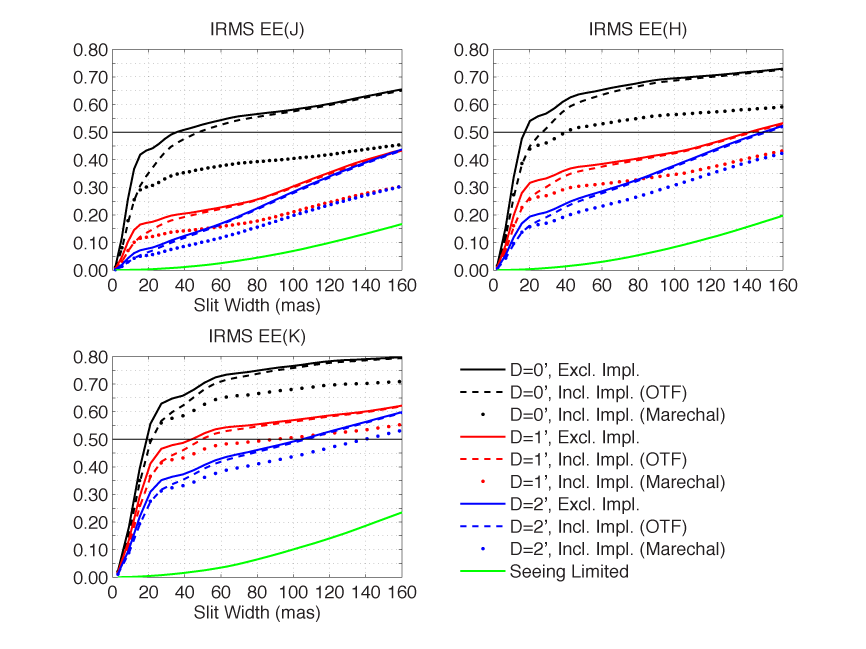♦ Dotted: Errors have a white spatial frequency spectrum, and the impact on the enclosed energies is estimated using Marechel's approximation.
♦ Dashed: Errors have a Kolmogorov spectrum, and the impact on the enclosed energies is estimated by multiplying the OTF by a transfer function in the spatial frequency domain.
You'll notice that the dashed curves aren't that much different from the solid curves for a 160 mas slit width, although more work is needed to estimate the actual structure function for these implementation errors.

Reference: